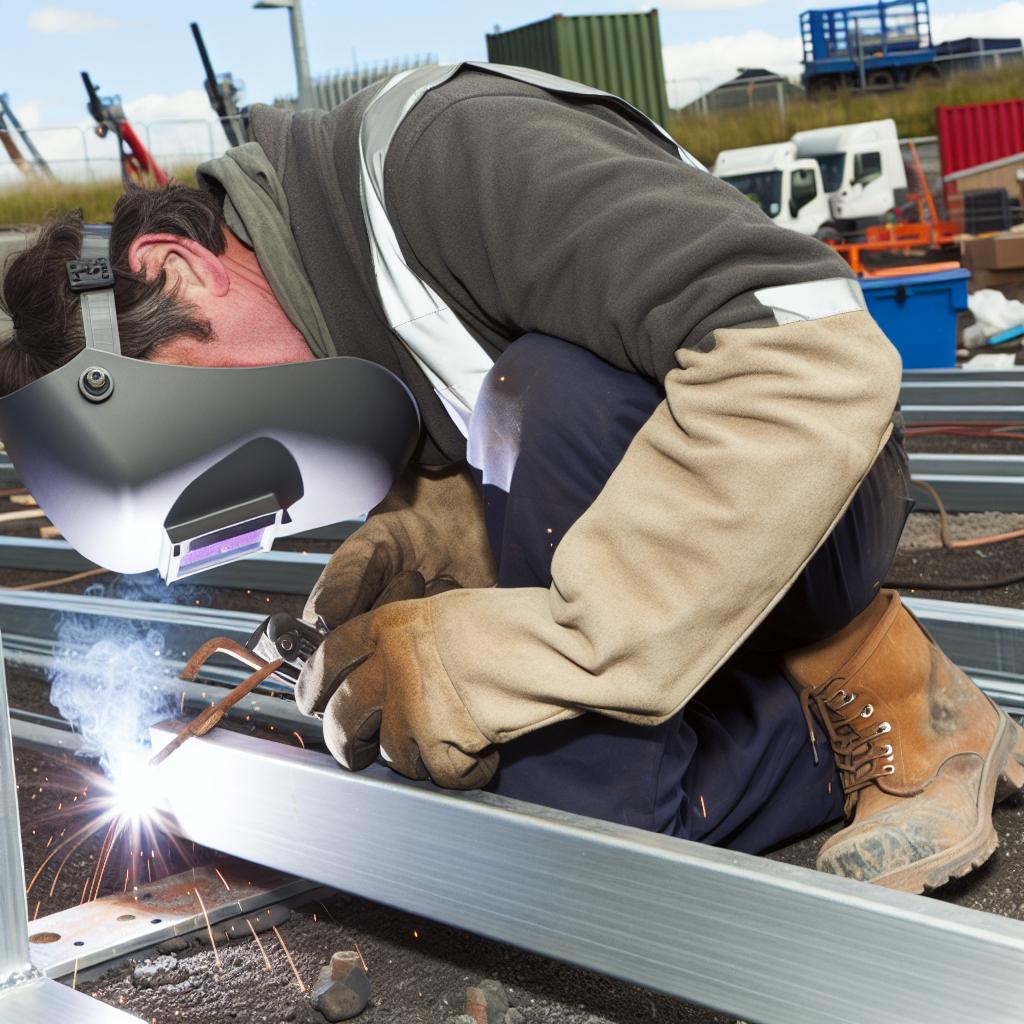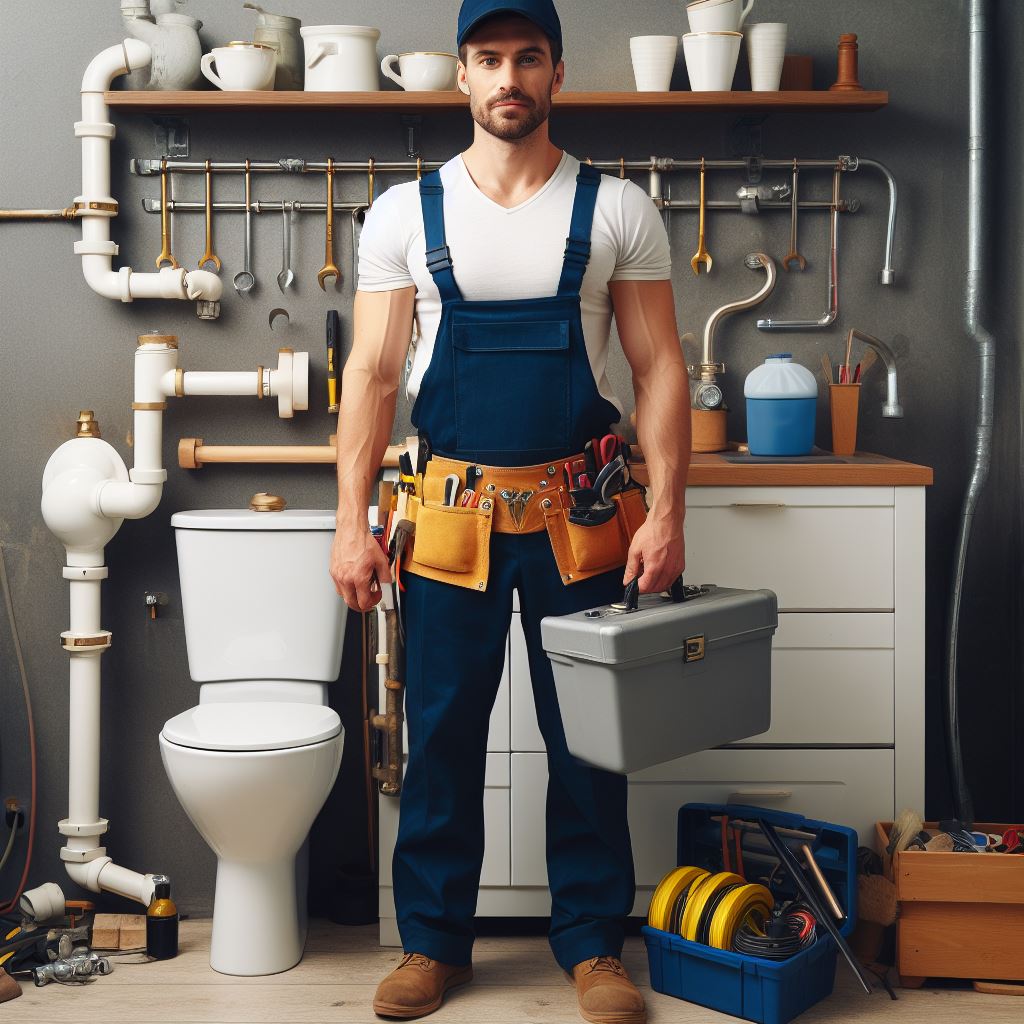Introduction to Welding and Its Critical Role in Construction
Welding serves as a backbone in the construction industry.
This essential process connects materials securely and effectively.
Without skilled welders, many projects could not come to fruition.
Importance of Welding in Construction
Welding plays a critical role in the structural integrity of buildings.
It bonds metals and other materials together under high heat.
This process is vital for creating strong and lasting frameworks.
Additionally, it allows for flexibility in design and construction techniques.
The Skills of Welders
Welders possess specialized skills that require extensive training.
They must master various welding techniques and equipment.
Further, attention to detail is crucial in their craft.
Each weld must be precise to ensure the safety of structures.
Safety Considerations in Welding
Safety is paramount in welding operations.
Welders must adhere to strict safety protocols to avoid accidents.
Proper protective gear helps minimize risks during the welding process.
Moreover, regular training updates on safety regulations are essential.
Personalized UK Career Consulting
Receive tailored career guidance designed just for you. Get actionable steps and expert support to boost your career in 1-3 days. Take control of your career now.
Get StartedImpact on Construction Projects
Welders significantly influence the efficiency of construction projects.
Timely welding works can expedite overall project timelines.
Their expertise can lead to cost savings while enhancing quality.
Consequently, their contributions are often overlooked yet invaluable.
The History of Welding in the Construction Industry and Its Evolution
Early Development
Welding dates back thousands of years to ancient civilizations.
Blacksmiths forged metals to create tools and weapons.
These early techniques paved the way for modern welding.
Industrial Revolution Influence
The Industrial Revolution transformed construction methods.
Welding gained importance due to increased demand for stronger materials.
Argon arc welding emerged, allowing for higher precision.
World Wars and Advancements
Both World Wars accelerated advancements in welding technology.
Military applications drove innovations that benefitted the construction sector.
Welders became critical in building infrastructure and military equipment.
Post-War Expansion
The post-war era saw a construction boom globally.
Your Dream Job Starts with a Perfect CV
Get a tailored CV and cover letter that captures your unique strengths and stands out in your industry. Let us help you make an unforgettable first impression.
Get StartedWelding became integral in high-rise buildings and bridges.
It allowed for faster construction and greater structural integrity.
Modern Techniques
Today, advanced methods like laser and robotic welding exist.
These new technologies enhance efficiency and reduce material waste.
Welders now require extensive training to master these techniques.
Safety and Regulations
Safety standards for welding have evolved significantly.
Regulatory bodies ensure safe working environments on job sites.
Training programs focus on skills and safety practices for welders.
The Impact of Welding on Construction
The history of welding reflects the growth of the construction industry.
From simple beginnings to advanced techniques, welders shape our built environment.
As unsung heroes, their impact continues to be significant.
Key Skills and Training Required to Become a Proficient Welder
Understanding Welding Techniques
Welders must master various welding techniques to excel in their field.
They often use methods like MIG, TIG, and Stick welding.
Each technique has unique advantages and applications in construction.
Optimize Your LinkedIn for Success
Boost your LinkedIn profile with a professional bio, keyword-rich headline, and strategic recommendations that attract recruiters. Stand out from the crowd and get noticed.
Optimize NowEssential Technical Skills
Strong technical skills are vital for successful welding.
Welders must understand blueprints and technical drawings.
Additionally, they need to be familiar with metallurgy and material properties.
Physical Abilities
Welding requires good hand-eye coordination and manual dexterity.
Welders often work in physically demanding environments.
Furthermore, they should possess the stamina to stand for extended periods.
Safety and Compliance Training
Safety training is crucial for any welding professional.
Welders must be knowledgeable about OSHA regulations and safety protocols.
They should also understand how to use personal protective equipment effectively.
Problem-Solving Skills
Welders face various challenges on the job site.
Strong problem-solving skills help them troubleshoot issues efficiently.
Moreover, they must be adaptable to changing project requirements.
Hands-On Experience
Gaining hands-on experience is essential for welders.
Many start with apprenticeships to develop their skills.
On-the-job training complements classroom learning effectively.
Certification and Licensing
Welders often acquire certifications to enhance their job prospects.
Organizations such as the American Welding Society offer credentials.
Certification validates their skills and commitment to quality.
You Might Also Like: Exploring Careers in Metal Fabrication: Crafting Precision Tools
The Various Types of Welding Processes Used in Construction
MIG Welding
MIG welding, or Metal Inert Gas welding, is widely used in construction.
This method utilizes a continuous wire feed and an inert gas shield.
As a result, it produces a clean and strong weld.
MIG welding is versatile and efficient for many projects.
Moreover, it allows for welding both thin and thick materials.
TIG Welding
TIG welding, or Tungsten Inert Gas welding, offers precise control.
This technique uses a non-consumable tungsten electrode to produce the weld.
In addition, it requires a separate filler material for most jobs.
TIG welding is perfect for intricate designs and thin components.
Thus, it is often favored for stainless steel and aluminum applications.
Stick Welding
Stick welding, also known as Shielded Metal Arc Welding (SMAW), is a basic method.
This process uses a consumable electrode coated in flux.
As the electrode burns, it creates a shielding gas to protect the weld.
Furthermore, stick welding is highly portable and easy to learn.
It is effective for outdoor projects, even in windy conditions.
Submerged Arc Welding
Submerged arc welding (SAW) involves a continuous arc beneath a layer of flux.
This method provides deep penetration and a high deposition rate.
Additionally, it minimizes spatter and fumes, enhancing safety.
Submerged arc welding is ideal for high-volume production work.
It excels in heavy fabrication and industrial structures.
Flux-Cored Arc Welding
Flux-cored arc welding (FCAW) is similar to MIG welding.
This method uses a tubular wire filled with flux to produce the weld.
Flux-cored welding is effective in outdoor settings, despite wind.
Additionally, it can be used in various positions, making it versatile.
FCAW is often the choice for rusty or dirty materials.
Uncover the Details: How Painters and Decorators Transform Living Spaces
The Importance of Welders in Ensuring Structural Integrity and Safety
Critical Role in Construction
Welders play a vital role in construction projects.
They ensure the structural integrity of buildings and infrastructure.
With their expertise, they fuse metal components together securely.
Consequently, they create robust structures that can withstand various forces.
Each weld contributes to the overall safety of the construction.
Ensuring Safety Standards
Welders adhere to strict safety regulations in their work.
They undergo rigorous training to handle tools and materials correctly.
Moreover, they inspect their work for any potential flaws.
This diligence prevents structural failures that could lead to accidents.
Ultimately, their efforts protect the public and workers alike.
Collaboration with Other Trades
Welders collaborate closely with other construction professionals.
Their work complements that of engineers, architects, and general contractors.
This teamwork ensures that all aspects of a project align perfectly.
Additionally, welders provide valuable input during project planning.
Their insights help optimize designs for durability and cost-effectiveness.
Adaptability and Problem-Solving Skills
Welders must adapt to various working conditions and environments.
They often face unique challenges at each job site.
For instance, they may need to weld in tight or difficult spaces.
Consequently, they develop strong problem-solving skills over time.
These skills enable them to find solutions quickly and efficiently.
You Might Also Like: Reskilling for the Future: UK Trade Careers in Renewable Energy
Real-life Examples of Infrastructure Projects That Relied Heavily on Welding
Bridges: A Testament to Welding Excellence
The Golden Gate Bridge showcases the strength of skilled welders.
Welders joined steel components, creating a landmark known worldwide.
Their precision and expertise ensured the bridge could withstand harsh conditions.
In addition, the Sydney Harbour Bridge represents another welding marvel.
Thousands of tons of steel were bonded together through meticulous welding techniques.
This construction has withstood the test of time, serving millions daily.
Buildings: Skyscrapers Reach New Heights
Many skyscrapers, like the Burj Khalifa, depend on advanced welding applications.
Welders form strong joints in structural steel, essential for stability.
This allows towering structures to rise above cities, captivating onlookers.
Furthermore, the One World Trade Center relied on robust welds for safety.
Each weld contributes to the overall structural integrity and resilience.
Marine Structures: Welding in Challenging Environments
Welders play a critical role in building oil rigs and submarines.
The offshore oil platforms exemplify welding’s importance in marine engineering.
The harsh ocean environment demands extreme precision and skill.
Moreover, submarines must have watertight seals achieved through expert welding.
This guarantees safe navigation in deep-sea conditions.
Transportation: Keeping Our Infrastructure Moving
Railways rely on welded rails for smooth, continuous tracks.
Welders create strong connections that withstand immense pressure from trains.
Roads and highways also depend on reinforced concrete, often utilizing welded frames.
This ensures stability and durability for heavy vehicular traffic.
Moreover, when it comes to airplanes, welding is crucial for aircraft frames.
Every weld on an airplane contributes to passenger safety above the clouds.
Utilities: The Backbone of Modern Society
Welders also join pipelines for gas and water infrastructure.
These joints must prevent leaks and withstand high pressure.
Moreover, power plants rely on welded components to ensure efficiency.
Welding connects vital systems, helping to keep our cities running.
Without skilled welders, many essential services would falter.
Explore Further: In-Demand UK Trade Skills for 2024: Which Ones Are Set to Thrive?

Challenges Faced by Welders in the Construction Industry
Physical Demands
Welding involves intense physical labor that can lead to fatigue.
Workers often carry heavy equipment throughout the day.
Additionally, the heat from welding can cause dehydration.
To combat these challenges, welders should take regular breaks.
Moreover, hydration is crucial to maintaining energy levels.
Safety Risks
Welders face numerous safety hazards on job sites.
The risk of burns and respiratory issues is significant.
Proper personal protective equipment is essential for safety.
Regular training can also enhance safety awareness.
Employers should prioritize a safe working environment.
Skill Requirements
Welding requires a specific skill set that takes time to develop.
Mastering different welding techniques can be challenging.
Training programs can help new welders gain essential skills.
On-the-job training paired with mentorship can also be effective.
This support fosters confidence in young professionals.
Workplace Conditions
Construction sites often present challenging environments for welders.
Weather conditions can affect their ability to perform tasks.
Welders may need to work at heights or in confined spaces.
Employers should provide adequate protective measures.
Adapting work schedules to avoid extreme weather can help.
Technological Challenges
Welders must stay updated with evolving technologies.
New equipment can require additional training and adjustments.
Investing in continuous education programs is vital.
Encouraging welders to embrace technology can enhance productivity.
Furthermore, having access to modern tools can improve safety.
Solutions to Welders’ Challenges
Implementing Safety Protocols
Establishing thorough safety protocols is essential for welders.
Regular safety drills can ensure preparedness on-site.
Employers should provide comprehensive safety training.
Conducting risk assessments can identify potential hazards.
Enhancing Training Programs
Developing robust training programs is key for skill advancement.
Offering workshops that focus on new technologies can be beneficial.
Collaboration with technical schools can improve training quality.
Additionally, mentoring programs can provide guidance and support.
Improving Work Conditions
Creating a positive work environment fosters better performance.
Providing ergonomic tools can reduce physical strain on welders.
Ensuring adequate breaks can prevent fatigue and accidents.
Employers should also consider climate-control measures.
Fostering Open Communication
Encouraging open communication builds trust among workers.
Welders should feel comfortable discussing safety concerns.
Regular meetings can facilitate the exchange of ideas and suggestions.
Implementing feedback mechanisms can improve workflow.
Recognition and Appreciation of Welders
The Role of Welders in Popular Culture
Welders are often overlooked in popular culture.
However, their craft appears in many films and shows.
For example, the iconic welding scene in “The Terminator” captures attention.
Additionally, many documentaries showcase the intricacies of welding.
As a result, these representations highlight the importance of their skills.
Welders in the Construction Workforce
Welders form the backbone of the construction industry.
Without them, many structures would not stand tall.
Their ability to join metals ensures durability and safety.
Moreover, they often work under challenging conditions.
The dedication of welders deserves more recognition.
Promoting Awareness and Respect
Raising awareness about welding can change perceptions.
Educational programs can highlight the significance of welding careers.
Events like National Welding Month promote respect for this profession.
Additionally, collaboration with schools can inspire future welders.
Community appreciation events can showcase their skills.
Celebrating the Contributions of Welders
Welders are vital to construction and culture.
By celebrating their contributions, society can better appreciate their work.
It’s time to recognize these unsung heroes for their indispensable role.
Advocating for Welders as Essential Contributors to Construction Success
The Vital Role of Welders
Welders play a crucial role in the construction industry.
They ensure structural integrity in various projects.
With their skills, they create strong, durable structures.
These structures can withstand natural disasters and daily wear.
Moreover, welders work on bridges, buildings, and pipelines.
The expertise of welders directly impacts safety and performance.
Technical Skills and Precision
Welders must master multiple welding techniques.
Their work demands high precision and attention to detail.
All welds must meet industry standards to ensure safety.
Any mistakes can lead to severe consequences.
Continuous training helps welders stay up-to-date.
New methods and technologies emerge regularly in welding.
Team Collaboration and Impact
Welders often collaborate with other professionals.
This teamwork enhances project efficiency and quality.
Communication is vital for seamless operations on-site.
Welders must understand the broader project vision.
Every weld contributes to the overall success of the build.
Recognition and Appreciation
Welders are often underappreciated in construction.
Their behind-the-scenes work is crucial yet overlooked.
Advocating for their recognition is essential.
Acknowledging their contributions boosts morale and respect.
It’s vital to celebrate welders on construction sites.
Fostering Future Talent
Investing in welding education is critical for the future.
Training programs can attract young talents to the trade.
Scholarships and apprenticeships can make a significant difference.
Encouraging interest in welding promotes innovation and growth.
Future welders will carry on this essential craft.
Call to Action
It’s time to advocate for welders as heroes of construction.
Recognize their critical contributions to every project.
Support programs that educate and empower aspiring welders.
Acknowledging their work creates a stronger future for construction.
Let’s celebrate the vital role of welders today.
Additional Resources
What are underrated/unpopular high paying jobs that don’t require …
One of my favorite parts about being a part-time instructor at …
[E-Book for Sale]
500 Cutting-Edge Tech Startup Ideas for 2024 & 2025: Innovate, Create, Dominate
$19.99 • 500 Tech Startup Ideas • 62 pages
You will get inspired with 500 innovative tech startup ideas for 2024 and 2025, complete with concise descriptions to help you kickstart your entrepreneurial journey in AI, Blockchain, IoT, Fintech, and AR/VR.




